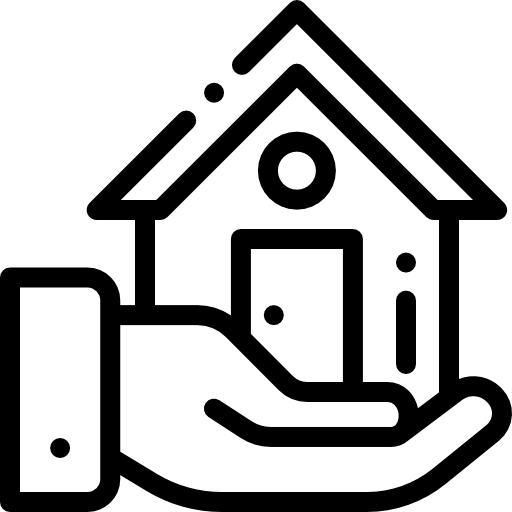There are huge malls, large airports, and busy business districts in Dubai, not to mention famous hospitals. With megastructures continuing to grow in scale and complexity, a good wayfinding system is becoming increasingly vital.
Conventional signage and maps prove to be inadequate in addressing the needs of current users, who expect effortless and accurate navigation. It is exactly where an indoor navigation solution is required, especially in a city like Dubai, which prides itself on its ambitions for innovation and technological progress.
The Unique Issues of Navigating Through Large Indoor Spaces
Unlike any others, malls, airports, or any large interior environments represent unique conditions for the users as well as managers. Poor wayfinding leads to confusion, frustration, and perhaps lost time, which in some cases could lead to lost income.
For companies, this generally translates to lower customer involvement and lower operational efficiency. In Dubai, where some of the world’s biggest shopping centers have been located, such as the Dubai Mall and Dubai International Airport, such issues are likely to be especially acute.
The Need for Indoor Navigation Solutions
1. Enhancing the Visitor Experience and Minimizing Frustration
An indoor navigation solution provides turn-by-turn, real-time guidance, perfectly guiding consumers through large and complex environments. From locating a particular store in a massive mall to finding the closest gate at an airport, these solutions enable people to easily and rapidly navigate.
2. Maximizing Access for All
Therefore, access must take precedence in hospitals, universities, and business parks. For instance, an indoor navigation scheme could incorporate features such as wheelchair-accessible routes that benefit those traveling in wheelchairs, while voice navigation aids those who are blind.
3. Improving Operational Efficiency
Aside from merely enriching the visitor experience, indoor navigation solutions also serve to enhance business efficiency. Facility managers are able to take advantage of the systems’ capacity to monitor foot traffic, better optimize space, and even send maintenance teams to specific areas. This data-driven approach more effectively allows companies to better operate and save money in the process while concurrently improving the quality of service.
4. Leveraging AR Navigation
Arguably the most thrilling new development in indoor navigation is the advent of augmented reality (AR). AR navigation superimposes virtual information onto the real world using smartphones or AR glasses, creating a highly natural and interactive navigation experience.
AR in Dubai’s massive malls or airports can guide users visually through arrows, icons, or virtual assistants, making it not only easy to navigate but also enjoyable.
The Dubai Indoor Mapping Role in Navigation Solutions
The key to a successful indoor navigation solution is its accuracy and comprehensive mapping. Dubai’s indoor mapping is the process of creating high-quality digital maps that depict all spaces inside a certain building, ranging from floor plans to points of interest and accessibility information.
These precise maps are what construct navigation systems whereby users can easily find their targets. That is, not to say, Dubai indoor mapping can be integrated very easily with other technologies like GPS or Wi-Fi and Bluetooth, ensuring good connection and real-time data. This makes it possible for businesses to easily give a seamless navigation experience, whether the project area is simple or complex, to their users.
Practical Applications in Dubai
- Shopping Malls and Retail: The world’s biggest shopping mall, Dubai Mall, is the prime example of where indoor navigation solutions are most essential.
- Airports: Dubai International Airport, the world’s busiest airport, is largely dependent on sophisticated navigation solutions in an attempt to transport passengers quickly between terminals, security stations, and boarding gates.
- For healthcare: Healthcare facilities inside the Dubai Health Authority, hospitals are considered to be large institutions that apply the most for an interior navigation solution, effectively routing patients and visitors to departments or pharmacies or emergency departments.
- Exhibition Centers: Exhibition centers in the Dubai World Trade Centre, where international exhibitions and conferences take place, use Dubai indoor mapping for the convenience of navigation among participants and visitors.
Conclusion
There should be no downplaying of the demand for indoor navigation solutions as Dubai develops apace in continuously upgrading and developing her already superior infrastructure. The implementations of an indoor navigation solution ameliorate the user experience, operational access, and efficiency, making it a necessary feature for expansive spaces like malls, airports, hospitals, and business districts.
Dubai indoor mapping enriches an indoor navigation ecosystem, increasingly having relevance as Dubai transforms into a smart and inclusive city. There are numerous other applications of indoor navigation solutions in various sectors, which are further extended through various solutions.
When you are in Dubai and require introducing cutting-edge indoor navigation solutions, Limina Studios is with you as a trusted business partner, providing customized solutions as per your requirements. With specialization in indoor AR navigation solutions and 360 virtual tours, Limina Studios keeps your business ahead in the delivery of outstanding user experiences.






















